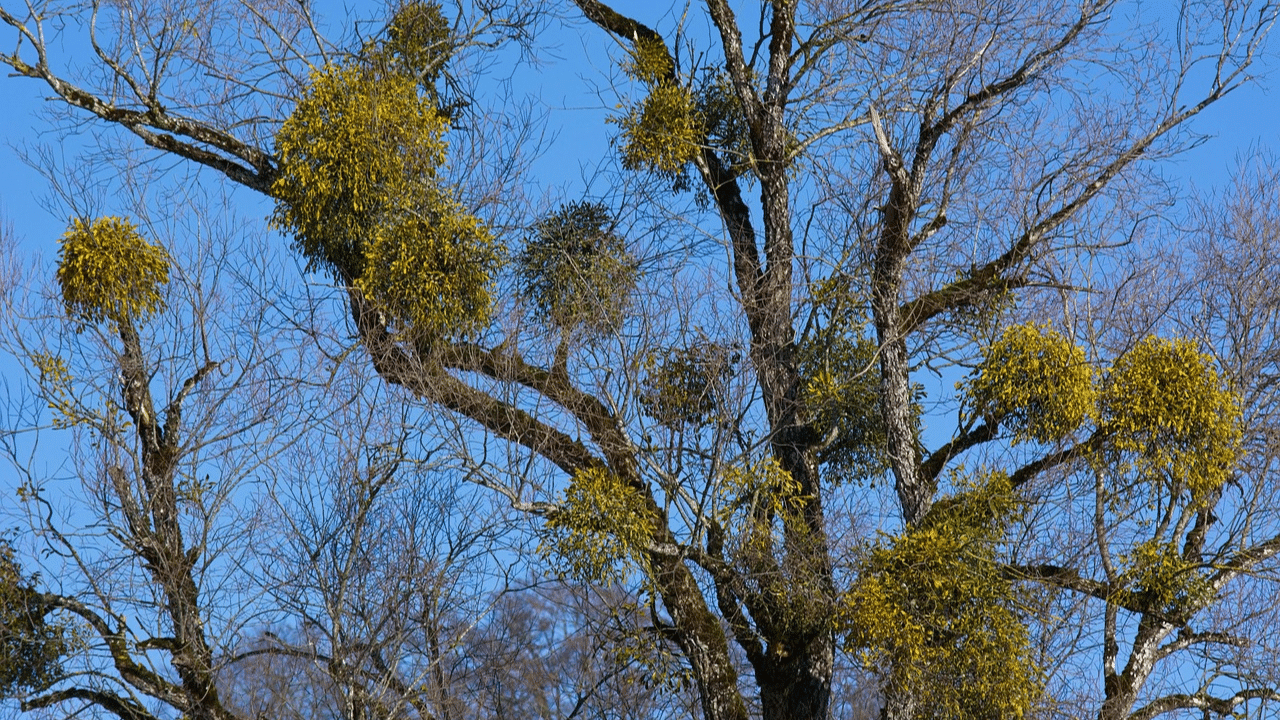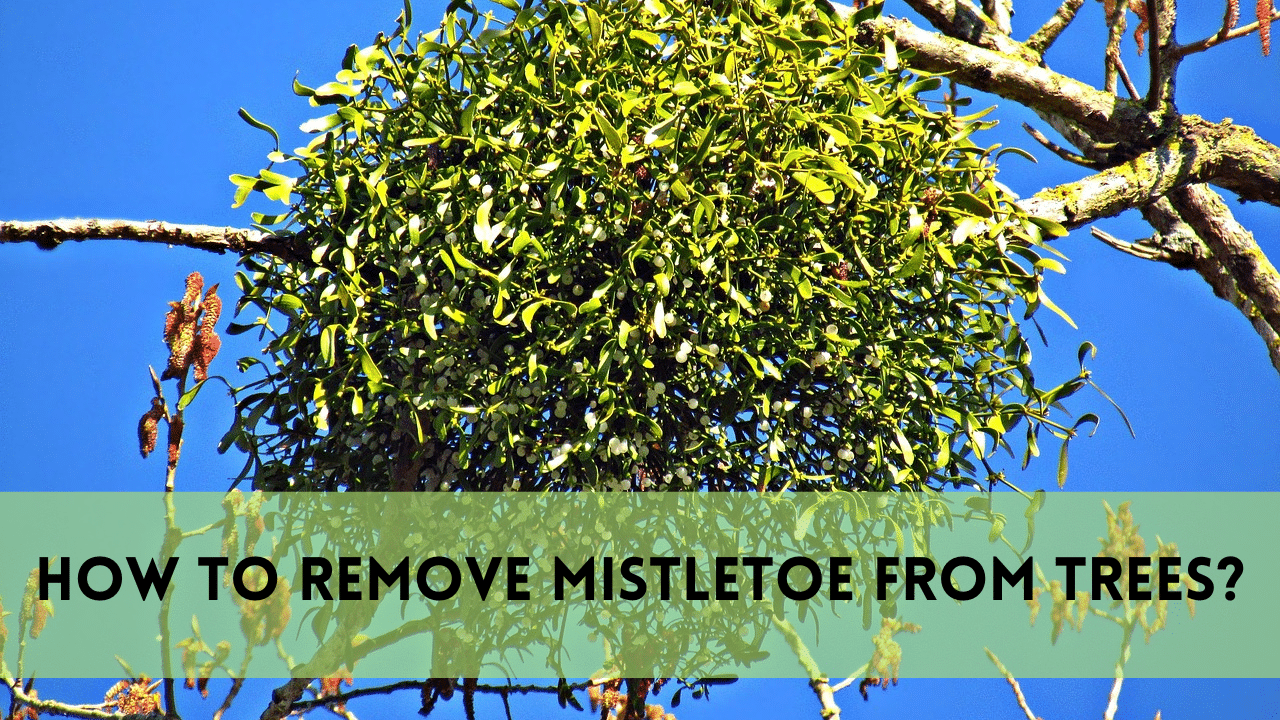Hey, there! Do you know how to remove mistletoe from trees, but it can be quite a problem for your trees. Today, we’ll go over everything you need to know about mistletoe, including what it is, why it’s an issue, and, most importantly, how to remove mistletoe from trees.
First, let’s define mistletoe. Mistletoe is a parasitic plant. That’s correct, it’s more than simply a pretty festive decoration! This plant adheres to the limbs of trees and shrubs, sucking water and nutrients from its hosts. While a little mistletoe may not seem like a big concern, it can gradually weaken your trees, making them more prone to illness and damage.
Understanding the Mistletoe Menace
Before we go into how to remove mistletoe from trees, it’s important to understand why mistletoe is so problematic. When mistletoe clings to a tree, it produces root-like structures called haustoria, which pierce the tree’s bark and enter the vascular system. This means that mistletoe is directly stealing nutrients and water intended for the tree. If not addressed, this can stress the tree over time, resulting in diminished growth, weakening branches, and even mortality.
Spotting Mistletoe in Your Trees
Mistletoe is not very difficult to spot. It usually appears as a clump of green leaves and stems that contrast sharply with the tree’s branches, especially in the winter when deciduous trees have shed their leaves. The plant can become rather enormous, like a bushy ball buried in the tree’s canopy.
Why Remove Mistletoe from Trees?
You may be wondering, “Do I really need to remove mistletoe from trees?” The short answer is “yes.” Here’s why.
Tree Health: Mistletoe depletes trees’ nutrients and water supply.
Aesthetic Appeal: Large clumps of mistletoe can be ugly, taking away from the beauty of your tree.
Safety: Weakened branches are more prone to break, endangering persons and property below.
Spread prevention: Mistletoe spreads via seeds carried by birds from tree to tree. Removing it from your tree helps to keep it from spreading to others.
How to Remove Mistletoe from Trees
Now that we’ve addressed why mistletoe should be removed, let’s go into how to remove mistletoe from trees. There are numerous treatments available, and the best one for you will be determined by the severity of the infestation and your level of tree trimming experience.
Pruning
Pruning is the most effective way to remove mistletoe from trees, especially if you find it early. Here’s how to accomplish it.
Identify the infested branches. Look for bunches of mistletoe and track them back to the tree.
Cut Back to the Source: Use clean, sharp pruning shears or a saw to cut the affected branch at least 12 inches below the place of attachment. This ensures that you remove all haustoria that have pierced the tree.
Dispose of the clippings: Do not leave the pruned mistletoe lying about. Dispose of it appropriately to avoid reinfestation.
Pruning is helpful for light infestations. For larger trees or serious infestations, you may require professional assistance.

Chemical Control
If pruning is insufficient or not practical, chemical treatments can help to remove mistletoe from trees. Ethephon, for example, is a growth regulator created specifically to reduce mistletoe. This is a general guide:
Select the Right Product: Look for a growth regulator labeled as mistletoe control.
Follow the Instructions: Please read and follow the manufacturer’s instructions carefully. This typically entails combining the product with water and spraying it directly onto the mistletoe.
Dormant season: To achieve the best effects, apply the therapy during the tree’s dormant season.
Chemical treatments can be successful, but they frequently need to be repeated to adequately address the issue.
Mechanical Removal
In rare circumstances, particularly with larger trees or widespread infestations, mechanical removal may be required. This involves:
Hiring a Professional: Hire a professional arborist or tree care firm, such as treeservicewestuniversityplace.com, to perform the removal.
Specialized tools: Professionals will use specialized tools and equipment to properly remove mistletoe from tall branches and larger trees.
Follow-up Care: Following removal, professionals can advise on how to ensure your tree properly recovers.
Preventing Further Infestations
Once you’ve gotten the mistletoe under control, you’ll want to keep it from returning. Here are a few tips:
Regular Inspections: Check your trees for mistletoe on a regular basis and remove any new growth as soon as possible.
Tree Health: Proper watering, mulching, and fertilizing will help your trees thrive. Healthy trees are more equipped to withstand pests.
Professional Maintenance: To maintain your trees in good condition, schedule regular maintenance with a tree care service such as treeservicewestuniversityplace.comHome.
FAQs
Does mistletoe hurt all trees?
Mistletoe can impact a variety of trees, but some are more vulnerable than others. Hardwoods including oaks, maples, and elms are popular hosts. However, conifers may also be impacted.
Can I remove mistletoe from trees myself, or should I get a professional?
You can remove tiny infestations and low branches yourself. For larger trees, significant infestations, or branches that are difficult to reach, it is better to contact a professional.
How frequently should I inspect my trees for mistletoe?
Regular inspections, at least once a year, can assist detect mistletoe before it causes a big problem.
Are there any natural predators of mistletoe?
Although some insects and birds feed on mistletoe, they are rarely efficient at controlling the plant. Human assistance is often required.
What happens if I leave the mistletoe untreated?
Untreated mistletoe can damage your tree over time, increasing its susceptibility to disease and environmental stress. In severe circumstances, it might cause the tree to die.
Conclusion
Mistletoe may be a charming emblem of the Christmas season, but it is anything but charming when it parasitizes your trees. Understanding what mistletoe is, why it’s an issue, and how to remove mistletoe from trees will help you safeguard and maintain your trees’ health.
Whether you decide to tackle the problem yourself or use a professional service such as tree service west university place, taking action is critical to keeping your landscape healthy and beautiful. Roll up your sleeves, grab your pruning shears, and give your trees the care they deserve!

